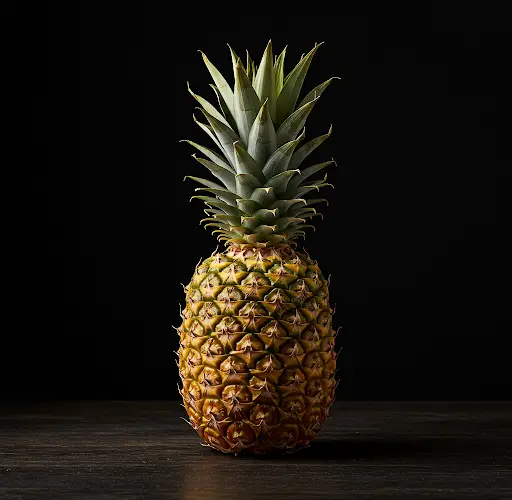Tips for Growing Pineapple Super Fast from Discarded Tops – A Simple Guide for Home Gardeners
Pineapples are not only delicious and packed with nutrients, but they also have one of the most unique appearances in the fruit world. What many people don’t realize is that growing your own pineapple at home is surprisingly easy—and you can do it using something you’d normally throw away: the leafy top of the fruit.
Instead of discarding the pineapple top after slicing off the fruit, you can turn it into a productive, attractive houseplant that may even reward you with fruit. With the right tips and techniques, you can significantly speed up the growth process and give your pineapple plant the best chance to thrive.
Why Grow Pineapple from the Top?
-
Cost-effective: No need to buy seeds or seedlings—just use the part you already have.
-
Sustainable: Reduces kitchen waste and makes full use of your fruit.
-
Fun and educational: Great project for kids or beginners learning to garden.
-
Beautiful plant: Pineapple plants are tropical and decorative, adding greenery indoors or outdoors.
Step-by-Step Guide to Growing Pineapple from the Top
1. Select a Healthy Pineapple
Start with a ripe pineapple that has a green, firm, and healthy top (the leafy crown). Avoid fruit with dried, brown, or damaged leaves. The better the condition of the top, the higher the chance of successful rooting and fast growth.
2. Remove the Top Properly
Use a sharp knife or twist off the leafy crown by hand. Once removed, carefully peel away a few of the lower leaves to expose about an inch of the stem. You should see small brown bumps—these are the nodes that will form roots.
Let the crown dry in a shady spot for 1 to 2 days. This helps seal the cut end and reduces the chance of rotting when placed in water or soil.
3. Encourage Fast Root Growth in Water
Place the dried pineapple top in a glass of water, making sure only the bottom part (where roots will grow) is submerged. You can use toothpicks to hold it in place on the rim of the glass.
Set the glass in a warm, sunny spot (like a windowsill) and change the water every 2–3 days. Within 1 to 2 weeks, roots will begin to appear. Once the roots are about 2–3 inches long, it’s time to move to soil.
Alternatively, you can plant the top directly in soil, but starting in water helps you monitor root development and usually speeds up the process.
4. Plant in Well-Draining Soil
Choose a pot with good drainage and fill it with light, well-draining soil—cactus or succulent mix works well. Plant the rooted crown so that the base of the leaves is just above the soil surface.
Water thoroughly after planting, then allow the soil to dry slightly between waterings. Pineapples don’t like soggy roots, so it’s important to avoid overwatering.
5. Provide Warmth and Sunlight
Pineapple plants love warmth and sunlight. Place the potted plant in a spot that gets 6–8 hours of direct sunlight each day. If you’re growing indoors, a bright south-facing window is ideal. In cooler climates, bring the plant indoors during the winter to protect it from frost.
To boost growth, you can use a diluted organic fertilizer every 3–4 weeks during the growing season.
Tips to Speed Up Pineapple Growth
-
Warmth is key: Pineapples grow faster in warm environments. Keep the plant at temperatures between 70°F and 85°F (21°C to 29°C).
-
Sun exposure: The more sun, the better. Pineapples are tropical and need plenty of light.
-
Good drainage: Avoid soggy soil. Consistent moisture with proper drainage encourages strong root growth.
-
Patience pays off: While it can take up to 2 years for a pineapple to fruit, you’ll have a beautiful, thriving plant along the way.
When Will It Fruit?
Pineapple plants typically take 18 to 24 months to produce fruit, depending on the climate and care. However, with optimal conditions—especially warmth and light—this time can be shortened slightly. The plant first grows a rosette of leaves, then a tall flower spike, and finally, a pineapple forms at the top of the stem.
Once the fruit is harvested, the mother plant may produce small side shoots (called “pups”) that can be separated and planted to start the process all over again.
Final Thoughts
Growing a pineapple from a discarded top is a simple yet rewarding way to reduce food waste and enjoy a tropical plant right at home. With just a bit of attention and care, you can turn your kitchen scraps into a thriving green companion—and eventually, a homegrown pineapple.
Whether you’re an experienced gardener or a total beginner, this method offers a fun, sustainable, and visually pleasing way to grow your own fruit. So next time you slice a pineapple, don’t toss the top—plant it!


